#Villa dei Misteri
Text

Another interesting thing is that they used the frescoes of the Villa dei Misteri for Lucifers palace room.
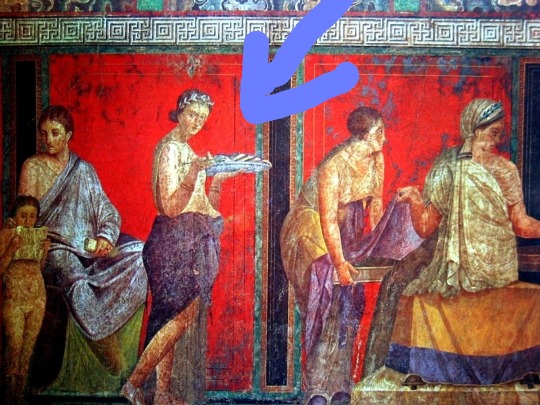

The villa is named after the Roman painting whose meaning to this day is not quite clear and therefore a mistery.
It might be some kind of cultic ritual but we still don't know for sure.
134 notes
·
View notes
Text
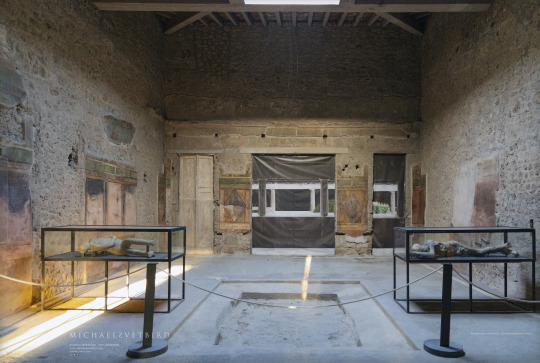
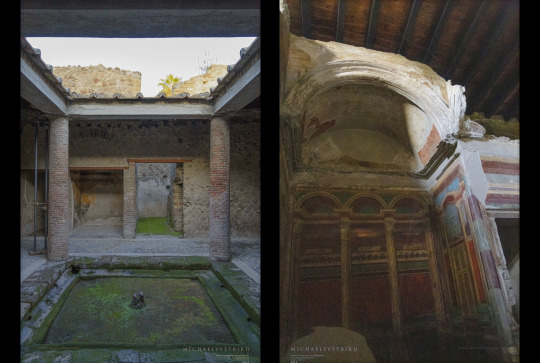

ATRIUMS | Villa dei Misteri | Villa of the Mysteries:
Pompei Scavi, Pompeii, Regio VI.
http://pompeiisites.org/en/archaeological-site/villa-of-the-mysteries
Parco Archeologico di Pompei | PAP
Web : http://pompeiisites.org/en
FB : https://www.facebook.com/pompeiiparcoarcheologico
IG : @pompeii_parco_archeologico
TW : @pompeii_sites
PAP | Michael Svetbird phs©msp | 10-11|2022 6100X4100|6200X4100
[non commercial use | sorry for the watermarks]
.
#pompeii#pompei#pompéi#pompeiscavi#scavi#archaeologicalpark#parcoarcheologico#archaeological site#villa of the mysteries#villa dei misteri#villa#romanvilla#bay of naples#ancient pompeii#pompeii ruins#ancient architecture#architectonic#archaeology#archeologia#ancient history#excavations#antiquity#heritage#ancient#museology#ancientcivilization#photography#museum photography#archaeologyphotography#michaelsvetbird
9 notes
·
View notes
Text
E então Armand voltou.
"Daniel estivera caminhando sozinho pela comprida estrada que leva de Pompeia à Vila dos Mistérios."
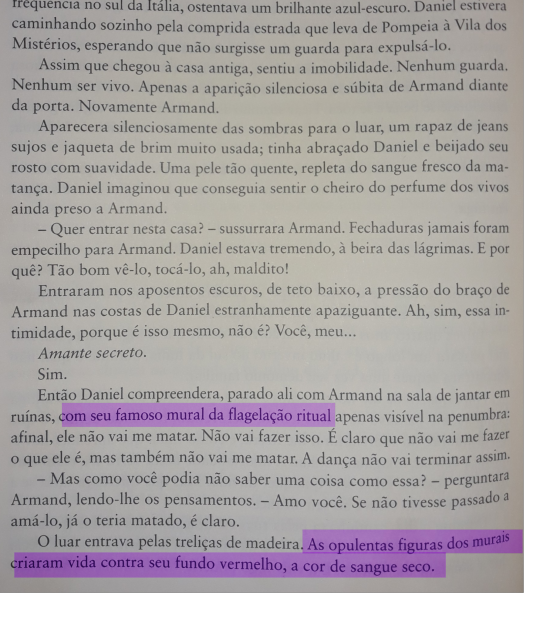
É na Vila dos Mistérios onde Armand e Daniel compartilham o sangue pela primeira vez. Segue abaixo mais informações sobre o local.
As villas são residências de uso urbano e rural, ou apenas rural, que devem conter caves, celeiros, currais, silos e armazéns de acordo com agricultura e pecuária da região. A Vila dos Mistérios, na área rural circundante de Pompéia, foi uma das vilas dedicadas ao cultivo de frutas, verduras, cereais, cevada e trigo, juntamente com o vinho e o azeite. Ela proporciona uma fantástica visão de planta e de técnicas construtivas de uma abastada vila romana rural, mas que mantem no desenho várias semelhanças com a domus urbana. A Vila dos Mistérios remonta originalmente ao século II a.C., mas o seu layout atual foi sendo modificado até aproximadamente o ano 62 de nossa era.
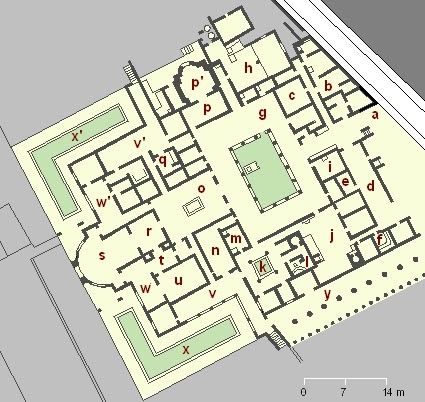

Além de representar um belo exemplo preservado de uma vila romana, a Vila dos Mistérios é famosa pelos seus afrescos, em especial as pinturas do seu icônico triclínio. Nele está representado os Mistérios Dionisíacos ou ritos pré-nupciais (foto acima a direita). O tema da representação é um assunto muito discutido, não se sabendo ao certo qual o tema correto, devido aos elementos ambíguos que podem remeter aos dois sentidos. (fonte)

A cena se encontra na parte da frente da Villa, em seu cômodo mais importante que é conhecido como triclinium ou sala de jantar e faz parte de uma série de quadros onde são retratados "mistérios" de um ritual de iniciação exclusivamente feminino. Historiadores da arte presumem que se referia ao ingresso de uma jovem “como mulher” na sociedade da época, quando a novata passava por uma morte e um renascimento simbólicos. O ritual está ligado a Dionísio — deus da agricultura e da natureza, da fecundidade, da alegria e do teatro, inspirador da fertilidade e também chamado de deus do êxtase, conhecido na mitologia romana como Baco. (fonte)
Eu não sei vocês, mas assim que eu li essa parte no livro a primeira coisa que me veio na cabeça foi: "eles se casaram!" E parece tão estranho pensar algo assim da situação, né? Mas são as Crônicas Vampirescas, estamos falando de Anne Rice e eu sou ignorante a respeito de todas essas referências histórias e artísticas que ela coloca nas histórias, mas depois de pesquisar sobre a Vila dos Mistérios e aprender isso... bom, eu não estava tão doida assim, né?
#armandiel#armand x daniel#armand#daniel molloy#tvc#vc#the vampire chronicles#devils minion#devil's minion#armand/daniel#villa dei misteri#o favorito do demônio ptbr#the queen of the damned#analise livro
4 notes
·
View notes
Photo
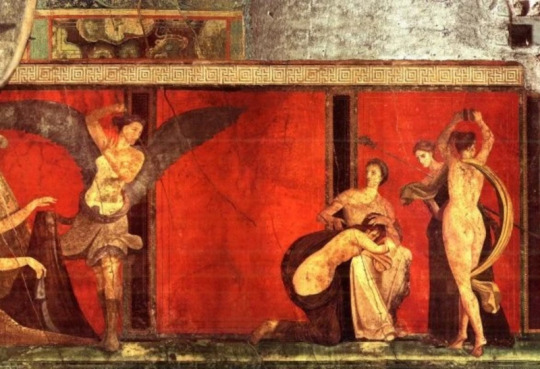
fresco at villa dei misteri, pompeii.
5 notes
·
View notes
Text
ARCHEOLOGIA / Full immersion nella storia: ecco la "Grande Pompei", un parco diffuso per visitare la città vesuviana, Boscoreale, Oplontis e Stabia
Tutte le aree archeologiche saranno collegate con una navetta gratuita e visitabili con un unico biglietto valido 3 giorni. Riaprono anche le ville di Stabia e l'Antiquarium di Boscoreale.
Tutte le aree archeologiche saranno collegate con una navetta gratuita e visitabili con un unico biglietto valido 3 giorni. Riaprono anche le ville di Stabia e l’Antiquarium di Boscoreale.
Ed eccola, finalmente, la Grande Pompei. Un parco diffuso di cui fanno parte le aree archeologiche di Pompei, Boscoreale, Oplontis e Stabia e tutto il territorio circostante. Un unico biglietto, valido per…

View On WordPress
#archeologia#Boscoreale#Campania#carro di Civita Giuliana#Civita Giuliana#Grande Pompei#Grande Progetto Pompei#notizie#Oplontis#Parco Archeologico di Pompei#pompei#scavi#scavi archeologici#Scavi di Pompei#Stabia#Villa dei Misteri
0 notes
Video
youtube
La Villa dei Misteri | storia dell'arte in pillole
#youtube#arte#artesplorando#storia dell'arte#esplorazione#divulgazione#artesplorazione#La Villa dei Misteri
0 notes
Text
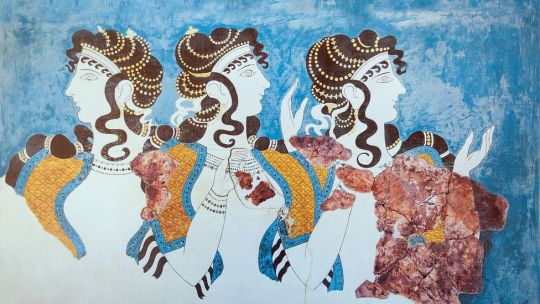
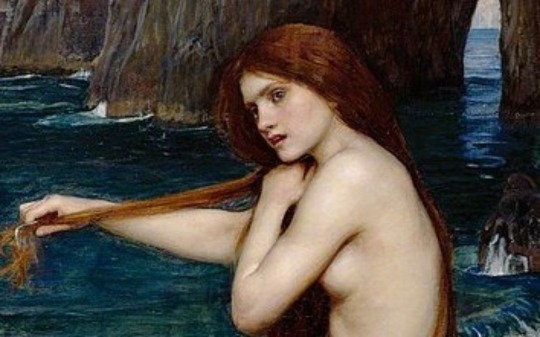
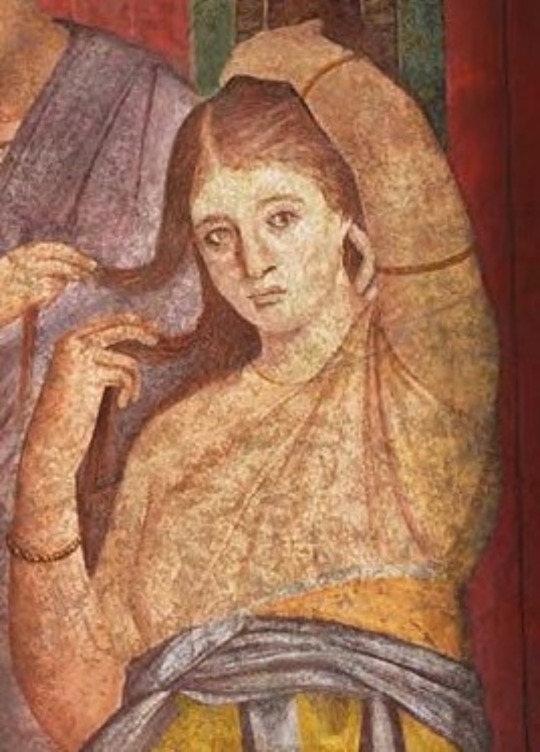


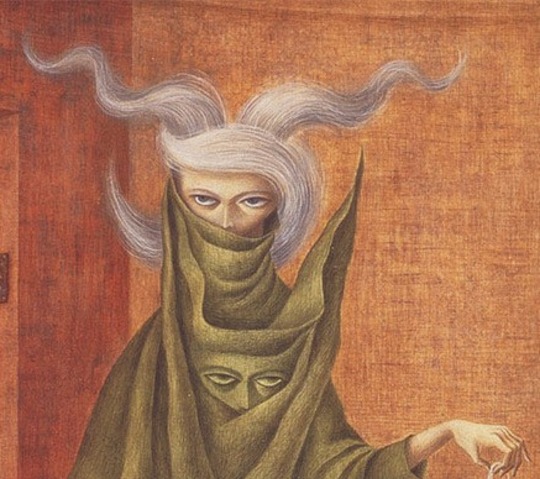

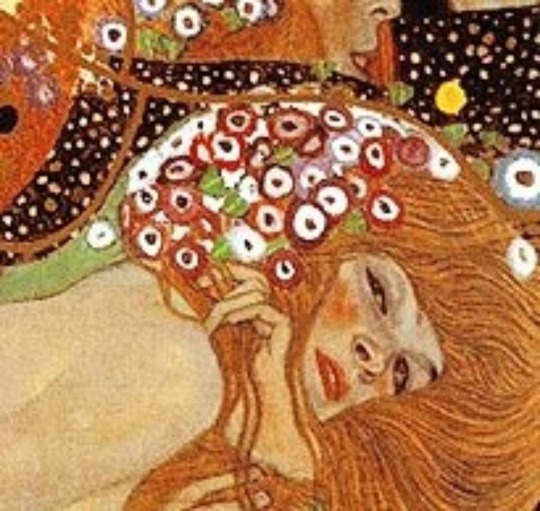
What could I love more than art? Women, goddesses and female hearts in art.
Ladies in Blue, fresco detail (Minoan art)
John William Waterhouse, A Mermaid
Fresco detail of Villa dei Misteri, Pompeii (Roman art)
Pablo Picasso, Portrait of Dora Maar
Louis Chalon, Circe
Remedios Varo, Mujer saliendo del psicoanalista
Marc Chagall, Lovers in Pink
Gustav Klimt, Water Serpents II
#marc chagall#john william waterhouse#pompeii#remedios varo#gustav klimt#louis chalon#pablo picasso#minoan art
78 notes
·
View notes
Text
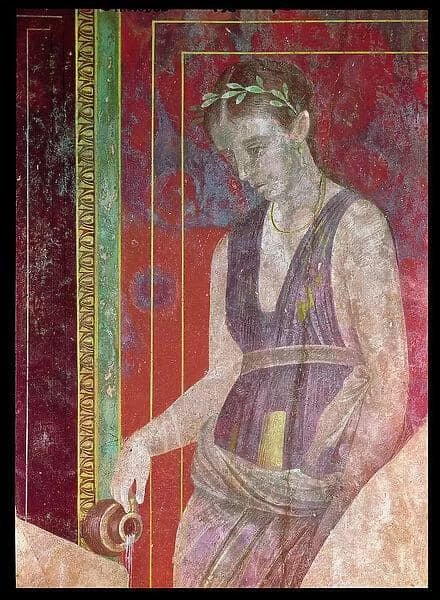
Fresco showing a Dionysian initiation ritual in the Villa dei Misteri, North Wall, Oecus 5 / detail, Pompeii (60-50 BCE) :: [Robert Scott Horton]
* * * * *
“It's a very Greek idea, and a very profound one. Beauty is terror. Whatever we call beautiful, we quiver before it. And what could be more terrifying and beautiful, to souls like the Greeks or our own, than to lose control completely? To throw off the chains of being for an instant, to shatter the accident of our mortal selves? Euripides speaks of the Maenads: head thrown I back, throat to the stars, "more like deer than human being." To be absolutely free! One is quite capable, of course, of working out these destructive passions in more vulgar and less efficient ways. But how glorious to release them in a single burst! To sing, to scream, to dance barefoot in the woods in the dead of night, with no more awareness of mortality than an animal! These are powerful mysteries. The bellowing of bulls. Springs of honey bubbling from the ground. If we are strong enough in our souls we can rip away the veil and look that naked, terrible beauty right in the face; let God consume us, devour us, unstring our bones. Then spit us out reborn.”
― Donna Tartt, The Secret History
#fresco#Dionysian initiation ritual#Pompeii#Robert Scott Horton#quotes#Donna Tartt#The Secret History
32 notes
·
View notes
Text
Notes on "Ambidextrous Angle" here
Notes on "Lady Justice" here
Notes on the flowers in ep.8 here
Notes on the numbers on the car plate of No.3 and KMC here
The Colors in ep. 10
During the torture scene of LMS they went through multiple types of colors, which I found pretty interesting as someone whos studied colors and their meanings intensely over the years. And as a lot in TKV has meaning and thoughts put behind it, I wanted to make a post highlighting the scene- and the colors specifically. It will also including short historical informations about each color.
Its starts with a mix of red and orange on the tables- making it look like vermillion (a color that borders orange and red and is also often times used in skin color shading), specifically HEX color FFD400. The color will come up later again.
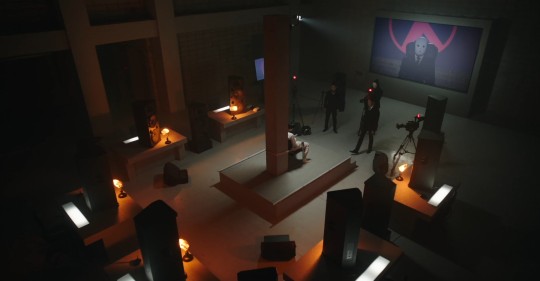
Interestingly enough, since ancient times the color vermillion was regarded as the color of blood- thus of life.
In Ancient Rome, the color was widely used to paint frescos, to decorate statues and produce cosmetics. It was also used in the Byzantine Empire reserved for the use of the imperial family and their administrators (used in official letters and imperial decrees) the illuminated manuscripts of the Middle Ages, in the paintings of the Renaissance, as well as in the art and lacquerware of China.
The color can also be found all over the murals in Villa dei Misteri (Villa of Mystery before 79 AD) in Pompeii.
As the color of blood and life, it fits perfectly as the starting color of the whole scene.
LMS in the meantime is illuminated by white light.
Ironically- or fitting?- its the color of innocence, purity, hope and clarity. It represents goodness, perfection and peace. Looking at the color, it purifies the mind and helps to find balance. But like every color, it also has negative aspects such as coldness, emptiness, nothingness and distance.
A lot of times, its also the color of self-reflection (VERY fitting if you’d ask me). White was one of the first colors used in Prehistoric cave art (good example are those at Lascaux in France) which feature marks and images made used calcite and chalk. Ancient Greece saw white as a sacred color (representing light and motherhood), in Rome plain white togas (togas virilis) were worn by all citizens at ceremonial occasions.
During early christian times, they adopted the romans use of white- priests wore the color during mass as for them, white was symbolic of purity, humility and virtue (reinforced by the “white lamb” which was symbolic of christ’s sacrifice for humanity).
Later, throughout the middle ages, white was strongly associated with martyrdom. It was also the commonly worn color by widows in mourning up until the 16th century- giving the color an association with death and refelection.
Illuminating a criminal like him in white is truly a choice. It does fit the intentions of the whole torture tho: redeption, hope and clarity.
In the same frame, centering the vermillion color, we can also see yellow and orange.
Yellow is the color of happiness and optimism. It clarifies and inspires the mind and helps in creativity- it also gives warmth. The negative associations with the color are caution, egotism, deception and cowardice.
Yellow is also one of the oldest colors to exist and is seen in cave paintings 17.000 years old.
Painters in the Middle Ages and Renaissance used “Indian yellow” to show an outsider. Most notably Judas Iscariot (again, pretty fitting to the whole biblical references found throughout TKV). In ancient religions, yellow was a sacred color.
Just like gold, it was seen as eternal, imperishable and indestructible.
Many religions worshipped the sun, and the sun gods were depicted wearing yellow. The Ancient Egyptians believed the gods had gold skin and bones and used yellow for their skin tone in art. Yellow is also an important color in Buddhism, signifying humility. It can also be found in paintings from Ancient Rome.
Orange symbolizes youth, enthusiasm and optimism. It uplifts and stimulates the mind. Its the color of creativity, warmth and spontaneity. On the other hand, it shows domination and impatience. Up until the 16th century it was called “saffron” or “yellow-red”. When Portuguese merchants brought orange trees to Europe from Asia in the late 15th and early 16th centuries, the citrus fruit’s name was adopted for the general color.
In some cultures, orange is regard as a sacred color because it balances red’s power and yellow’s perfection. Monks and holy men in some Asian religions, like Buddhism, wear orange robes because that dye has been readily available historically.
Buddhists also connect orange to the highest state of illumination. Its also the color of transformation in Confucianism. and a symbol of royalty.
Again, two colors highlighting the personalties of both LMS and KSJ in a well done way.
The color then changes to a dirty blue hue- with a slight turquoise shade.
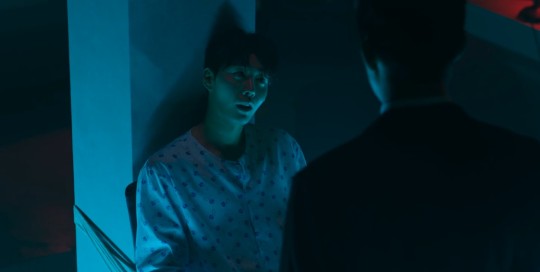
Blue- the color of loyalty and trust. It gives the feeling of security, trust, confidence, peace, honesty and reliability. It calms and relaxes the brain. Negative feelings associated with blue are passiveness, depression and prediction.
The history of the color blue is quite interesting: It was never a color to be found in nature (no, water isnt blue and the sky also changes colors and if there is indeed something blue found in nature its either with a violet or turquoise shade) thus, we humans previously were never able to even “see” the color (we perceived it, but we had no idea what it even was).
The first society to have a word for the colour blue was the Egyptians, the only culture that could produce blue dyes at around 2.200 B.C: They loved the precious stones lapis and turquoise* so much that they invented the first synthetic blue pigment in order to affordably copy their unique color. “Egyptian blue” was made by mixing silica, lime, copper, and alkali, and it could be used on stone, wood, plaster, papyrus and canvas.
Turquoise on the other hand is the color of compassion, calmness and clarity. It balances and stabilizes the brain. It can help concentrate, to grow, and underline empathy. In contradiction it also symbolizes narcissism, stress and secrecy.
The earliest evidence of turquoise* gemstones comes from Ancient Egyptian tombs: They contain elaborate turquoise jewelry dating back to 3000 BCE. Egyptians set turquoise in gold necklaces as well as in rings, used it as inlay, and carved it into scarabs. Most notably, King Tut’s iconic burial mask was extravagantly adorned with turquoise.
The oldest turquoise mines are in the Sinai Peninsula of Egypt. One sat near an ancient temple dedicated to Hathor, the Greek goddess of love and joy who was worshiped as a protector in the desert and as the patron saint of mining.
Egyptians called turquoise “mefkat”, which meant “joy” and “delight.”
-> Ancient Persians also decorated extensively with turquoise, often engraving it with Arabic script.
Turquoise covered palace domes: For them, its sky-blue color represented heaven. (This later inspired the use of turquoise in buildings like the Taj Mahal). They also adorned their daggers and horses’ bridles with it as they believed it granted protection. They would also wear turquoise gemstone jewelry around their necks and in their turbans.
-> Meanwhile, pre-Columbian Native Americans mined the turquoise stone throughout the present-day southwestern United States. Shamans used it in sacred ceremonies to commune with the spirit of the sky.
-> Apache Indians believed that attaching turquoise to bows (and later, firearms) improved a hunter’s accuracy.
-> Turquoise became valuable in Native American trade, which carried North American material toward South America.
-> Consequently, Aztecs cherished turquoise for its protective power and used it on ceremonial masks, knives, and shields.
Picking the color blue is again a really nice callback to the OST. PT3 (Blue by Aalia) and highlights the depression (or "death") KSJ went through.
Turquoise shining onto LMS face fits perfectly. The negative aspects highlight his persona.
After the blue, the color switches to green and here it is when it gets really interesting- this might be an even longer historical excurse than the turquoise one:
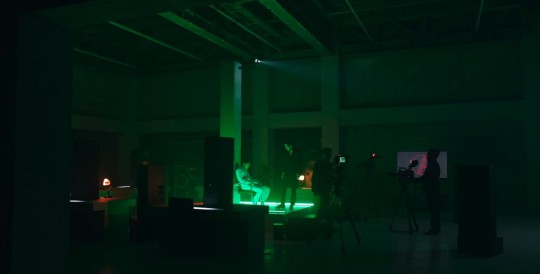
First we should start by looking at the positive associations to the color: It means harmony, safety, growth, health, hope, prosperity and luck. It helps the brain to revitalize, to relax and encourages. Negative aspects associated with the color are judgment, materialism and inexperience. And obviously the most famous ones: Envy and jealousy. We all know the famous saying “Green with envy”
The history of the color green dates back to the Ancient Egyptians. To produce the color they used green earth and malachite, while the Ancient Greeks used verdigris.
-> Malachite contains a high percentage of copper which makes it highly poisonous to humans when inhaling the dust or eaten. Once its polished its not poisonous anymore.
-> Verdigirs is a common name for any variety of poisonous copper salts and acetic acids. Green had a resurgence in art during the Impressionist movement due to advancements in green pigments and paints.
The bold emerald green became popular in fashion in the 1800s, used for gloves and dresses- as well as wallpapers and furniture as well as found in candy, paper, toys, medicine and dye- it was also then it became an even more poisonous color. Its name varies from “Scheele's Green”, “Paris Green” to “Emerald Green” and “Schweinfurt Green”.
And as it was probably already obvious, the color was loaded with copper arsenite which is one of the deadliest elements to have ever been found.
Scheele’s green (invented around the 1775 by the Swedish chemist Carl Wilhelm Scheele) was an artificial colorant that was made by heating up sodium carbonate, adding arsenious oxide, and stirring until the mixture was dissolved. Copper sulfate was then added as the final ingredient which ends up giving it its vibrant green color
->(Arsenic is a highly toxic substance that causes skin lesions, vomiting, diarrhea, and in some cases, cancer) As said as it was quite popular in the 1800’s countries were riddled in this substance.
->(It has also been rumored to have killed the famous Napoleon Bonaparte.)
Schweinfurt green is the product of combining copper acetate with arsenic trioxide, producing copper acetoarsenite. The toxic pigment was commercially developed in 1814 by the Wilhelm Dye and White Lead Company in Schweinfurt, Germany. It too was used everywhere, from clothing and wallpaper to colorant for fake flowers and paint.
By 1860 more than 700 tons of the pigment had been produced in the country alone.
There are stories of factory workers, mainly those who worked with fashion, suffering acid burning and losing their hair and limbs, specifically their hands, after they had been in contact with the color for way too long.
“In 1871, a lady who purchased a box of green-colored gloves at a well-known and respectable house was horrified to find that her hands broke out in blisters after putting them on. Unless the dye was sealed, sweaty palms could cause the dye to run onto the wearer’s skin. Other accounts from this era tell of babies dying in their nurseries after playing on green carpets or rubbing up against green wallpaper. One foreign dignitary even told Queen Victoria that the green wallpaper in Buckingham Palace had made him ill.”
On November 20, 1861, Matilda Scheurer, a 19-year-old artificial flower maker, died of “accidental” poisoning: The formerly healthy, “good-looking” young woman worked for Mr. Bergeron in central London, along with a hundred other employees. She “fluffed” artificial leaves, dusting them with an attractive green powder that she inhaled with every breath and ate off her hands at each meal. The brilliant hue of this green pigment, which was used to colour dresses and hair ornaments, was achieved by mixing copper and highly toxic arsenic trioxide or “white arsenic” as it was known. The press described her death in grisly detail, and by all accounts, Scheurer’s final illness was horrible. She vomited green waters; the whites of her eyes had turned green, and she told her doctor that “everything she looked at was green.” In her final hours, she had convulsions every few minutes until she died, with “an expression of great anxiety” and foaming at the mouth, nose and eyes. An autopsy confirmed that her fingernails had turned a very pronounced green and the arsenic had reached her stomach, liver, and lungs.
-> More on “Scheele’s Green” here
Green so not only fits the scene in relation to envy and jealousy, but also to its poisonous attributions. It again highlights KSJ previous personality (harmony) and LMS' (envy)- and the horrible deathly history behind the color makes it even more clear what type of person he is.
After the green, the room is then engulfed in yellow as well as vermillion (explained above) again-

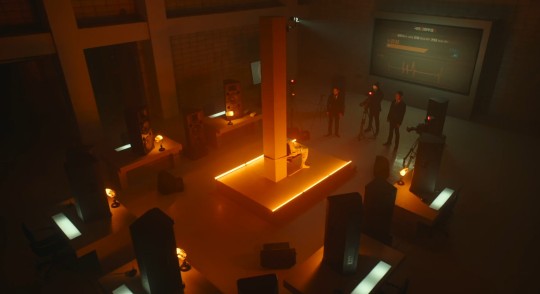
Following this, the last change of color we see is red.

Associated with action, strength, energy and passion red helps to stimulate and motivate the mind, to pay attention and stay cautious. Its positive aspects are courage, desire, sexuality and confidence whereas its negative associations are anger, danger, revenge and aggression.
Throughout history, the color red has represented many things: life force, the divine to love, lust, and anger. Throughout the Middle Ages, red was a color of privilege in the Western world.
For many cultures, it was the only color worthy enough to be used for social purposes (“In some languages, the word for red was the same as the word for color”).
One of the first color developed for painting and dying, red became associated with war, wealth, and power in antiquity.
In the Middle Ages, red had a religious significance, as it was seen as the color of the blood of Christ and the fires of Hell. It also had a secular meaning: The symbolism of love, glory, and beauty. During the Protestant Reformation, red began to decline in status and fell out of favor: It was viewed as indecent and immoral as it was linked to luxury and the excesses of the Catholic Church. After the French Revolution, red gained new respect as the color of progressive movements, freedom, new liberties and radical left-wing politics.
Personally, I love how they not only picked red as the last color to highlight the anger and pain of KSJ but also how it illuminates both him and KMC in a different shade. While KSJ has the more darker red, underlining the more calmer anger, KMC is drowned in bright hot red- underlining his anger which he definitely does NOT have under control (hes holding back so much in that scene and if it wasnt for the death penalty awaiting KSJ if LMS would die, he would have killed him without hesitation). Also, the religious importance is another nice callback to all the religious imagery we have seen throughout the drama.
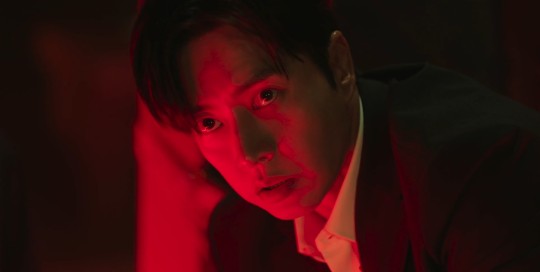
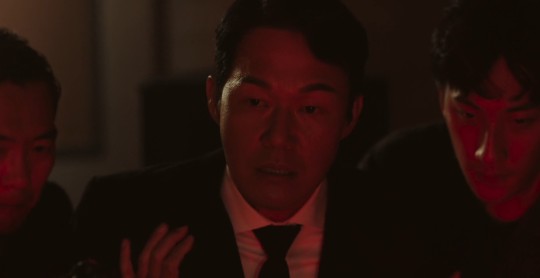
(might also add my delusions to the post: the red symbolizes the love they still feel for each other)
Intentionally or not, the way and order how they picked and presented the colors directly mirrors each character, their personal journey and the development of their anger. The fact it started with more calmer/friendlier colors and slowly turned into more agressive ones is done just beautifully.
24 notes
·
View notes
Photo
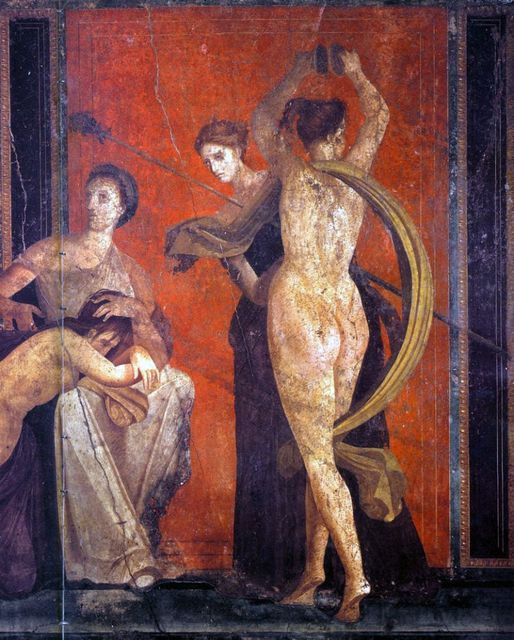
Suonatrice di cimbali, affresco nella Villa dei Misteri, Pompei, I secolo a.C.
143 notes
·
View notes
Text
A Norrkoping vedevo il fiume scorrere a picco sotto le finestre della camera. Ogni sera sognavo di essere con te a dormire tra le lenzuola morbide di quel letto in questa stanza con le pareti rosse, rosse come la Villa dei Misteri a Pompei.
Nella notte Il fiume - nero come lo Stige - mi guardava cupo.
Mi sdraiavo nel letto enorme e immaginavo che tu fossi lì con me, che fossimo insieme. Noi che non abbiamo mai fatto l’amore in un letto.
We ‘ll meet again, ci rincontreremo amore mio.
Non so dove non so precisamente quando ma ci rincontreremo amore mio ancora spero per sempre.
Prenderemo un caffè davanti al fiume spizzicando cetrioli e tu mi sorriderai sotto le ampie falde del tuo cappello azzurro parlando col tuo perfetto accento italiano e la tua terribile grammatica tedesca. E la voce di un angelo.
Io ti bacerò fino a perdere il respiro.
E tu sorriderai, forse, di nuovo, come sempre.
3 notes
·
View notes
Photo
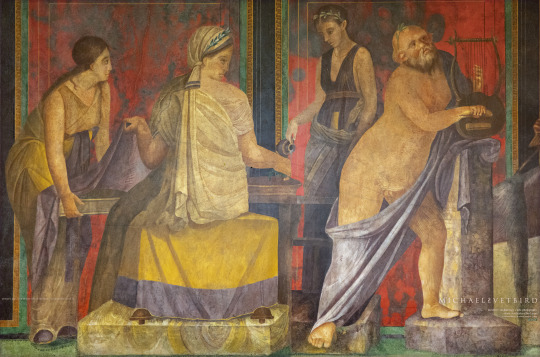
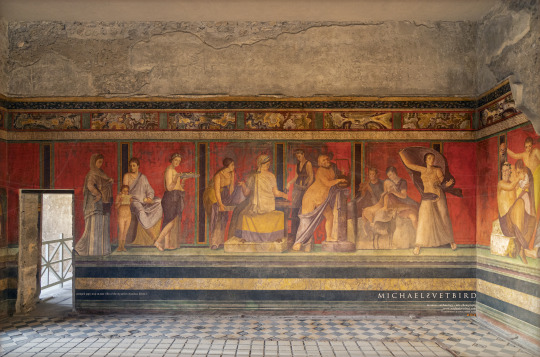

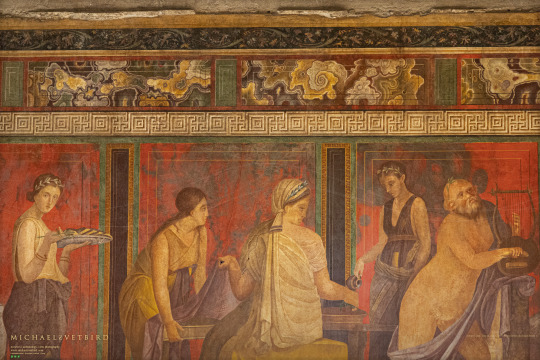
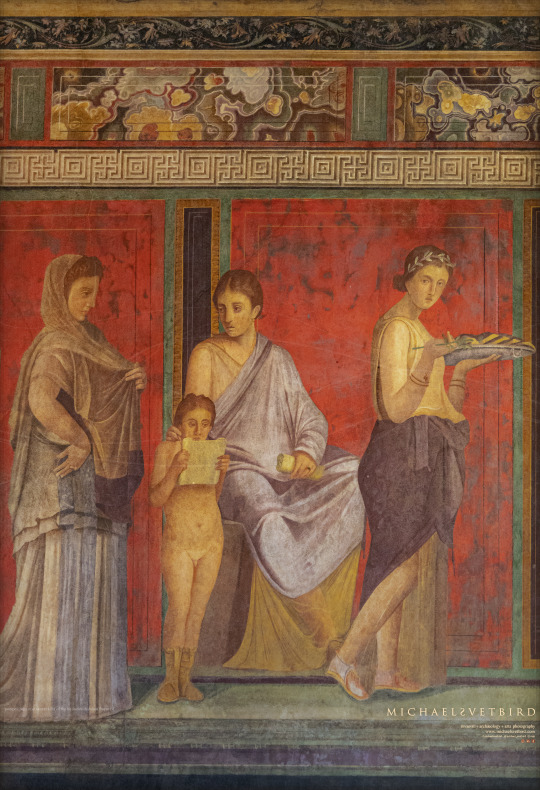
• VILLA DEI MISTERI | Villa of the Mysteries:
"The painted frieze, which can be dated to between 70 and 60 BC. is characterized by the representation of large scale mythological figures."
[txt ©PAP]
Room 5, Main Wall Painting [side-walls are on the way]
Villa of the Mysteries, Pompei Scavi, Pompeii, Regio VI
http://pompeiisites.org/en/archaeological-site/villa-of-the-mysteries
70-60 BC.
Parco Archeologico di Pompei | PAP
http://pompeiisites.org/en
FB: https://www.facebook.com/pompeiiparcoarcheologico
IG: @ pompeii_parco_archeologico
TW: @ pompeii_sites
• Pic 2:
- A Maenad, who animated the processions of Dionysus, recoils in fear.
- Paniskoi, mythological figures who lived in the woods, suckle a kid and play music.
• Pic 3:
- The preparation of a ritual meal for the deity [3 female figs].
- Silenus playing the lyre.
• Pic 4:
- The reading the liturgy of the ritual [3 figs w/ a boy].
- A pregnant young woman offers sacred cakes.
• Pics 1 and 5:
- General views of the scene [Main wall, Room 5].
PAP | Michael Svetbird phs©msp | 10-11|2022 6200X4100 600 [I.- III. & V.]
[no commercial use | sorry for the watermarks]
#pompeii#pompei#pompéi#pompeiscavi#scavi#archaeologicalpark#parcoarcheologico#archaeologicalsite#villaofthemysteries#villadeimisteri#villa#romanvilla#ancientpompeii#pompeiiruins#ancient#ancientpainting#fresco#dionysus#archaeology#ancienthistory#excavations#antiquity#heritage#museology#museum#mythology#photography#museumphotography#archaeologyphotography#michaelsvetbird
26 notes
·
View notes
Text

Animal facts:
Chipmunks are a part of the squirrel family and actually split off from rats and mice close to 70 million years ago. Source: A-Z Animals
Chipmunks need around 15 hours of sleep per day. Source: Treehugger
One chipmunk can gather up to 165 acorns in one day. Source: National Geographic
In just two days, a chipmunk can gather enough food to last an entire winter. Source: National Geographic
Wild chipmunks, on average, live two to three years; captive specimen have lasted 8 years. Source: National Wildlife Federation
Consumerist and technological facts:
Alarm clock fact: The Ancient Greek philosopher Plato used an early form of alarm clock known as a water clock in the 4th century BC to wake up on time. Source: Atlas Obscura
Gum fact: Iran has the highest chewing gum consumption in the world. This is because packets of chewing gum tend to be given out when shopkeepers do not have enough change. Source: Oh My Gum
Latte fact: A man named David Schomer started the US latte art craze in the mid 1980s. There are now latte art competitions where you could even see 3D latte art. Source: TheKitchn
Social media fact: Instagram was originally supposed to be called Codename but the name was changed before its launch. Source: The Enterprise World
Guitar fact: The first guitar was invented in Ancient Egypt and was made from Cleaned Cedar and rawhide soundboard. Source: Breakthrough Guitar
Attendance prompt:
"In April 1909, when it seemed as if Pompeii might have disgorged most of its secrets, archeologists discovered a luxurious home with large windows, overlooking the sea. Within a week of the first excavation, a red mural was uncovered that was so well conserved, elaborate, and unfathomable that ever since the site has been known as the Villa dei Misteri- "Villa of Mysteries." (Pg 144, The Secret Lives of Color"
This passage was very interesting to me and I did not know that there was a preserved red wall in Pompeii. I have actually visited Pompeii and was amazed by everything I saw there. I did not see this red wall but it is so crazy to think that the color could last through all the years and ash. I looked up images of the mural and it was amazingly beautiful. The red is such a distinct color and I can't imagine any other color being preserved as well as it. It is also so interesting that we are constantly discovering new archeological findings, even from things that happened thousands of years ago.
4 notes
·
View notes
Text
A very Netflix Sandman
So, I just finished The Sandman, it's probably one of the most accurate renditions of a book I've ever seen, except maybe 1985 Pride and Prejudice, which also means that it doesn't really add more to the story. All in all it was a good production and I can see those who have never read the comics enjoying it very well, to me though it was just putting a real human face to Morpheus and the rest. A good way to pass a couple of days but nothing to really write home about.
More thoughts on it under the cut
So while I enjoyed it pretty well there were two major problems to me:
the first was how utterly Netflix the show was. I am no cinema expert and I admit freely that I understand very little about framing and cameras but there is something very specific about Netflix shows that I'm sure everyone who has watched more than one series has noticed. It's how utterly likely they are to one another. I believe it has something to do with the shooting, but if you take The Witcher, Stranger things and The Sandman and ignore the plot you can actually believe that everything happens in the same universe for how similar the general atmosphere is and while in the first two it didn't really impact how I experienced the show, in something like The Sandman, where the atmosphere is half the appeal of the comics, the clean and cut way in which Netflix shot it really bothered me.
the second thing is how human the Endless and the other creatures were. Do not mistake me, most of the actors did a really good job but they lacked everything that made them such iconic characters: Dream looked like a guy who didn't get over his 2001 phase, Death was a woman with a nice necklace, Johanna Constantine with her white coat looked like a cosplayer (I loved her, still cosplay though) and the less said about the demons the better. They had one really great shot of Dream at the end of the first episode but the rest was rather disappointing, the only characters to emerge for design were Lucifer (I cannot be objective about Gwendoline Christie), the Corinthian and Desire.
Now that we got that out of the way some more ramblings about things in no particular order:
the show is way less gory than the comics which, whatever
24 hours was probably the episode that suffered the most for the lack of atmosphere imo, reading it in the comics felt like a fever dream (or better nightmare), this one didn't
I loved the outfits of Dream across the century, special mention to 16th and 17th century for being very hot in very different ways
if this Lucifer asked me to renounce Paradise and go fight the Endless i would
also the painting of Villa dei Misteri in Lucifer Palace ??? I want to believe they put them there because Lucifer has good taste and not because painting depicting Mysteries= satanic rituals
Yes, I cried during The sound of her wings
I would have liked to see John Constantine, i know they couldn't do it for copyrights problem and i liked Jenna Coleman but still, it would have been nice
Desire. Just Desire. The cat suit? "Next time I'm gonna draw blood"?? Helloooooo
#the sandman#the sandman netflix#dream of the endless#death of the endless#desire of the endless#lucifer#gwendoline christie#long post#i'm still gonna roblog meme about it#so#be ready
18 notes
·
View notes
Text
see this color?
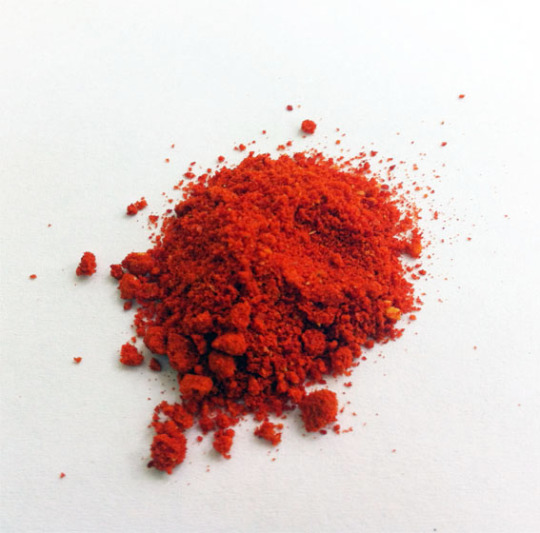
this is vermilion pigment, which is made of ground cinnabar ore. it was such a bright red that it may or may not have changed the course of art pigments as a whole, and both ancient and medieval artists loved it. i did a write up for class about it which i'm going to stick under the read more in case you're interested because, as my friend put it, tumblr loves weirdly specific information:
Vermilion is a brilliant, warm red pigment extensively used in ancient times through the 20th century. Especially coveted during the time of the Romans, the word derives from the Latin word vermes. This root refers to the scale insect kermes found on oak trees that, when dried and crushed, produced a rich red dye now known as crimson. True vermilion, however, comes from a very different source: cinnabar, the most common source ore of oxidized mercury (named for the Roman god of war: Mars). This toxic mineral forms in crusts and veins near volcanic activity and hot springs. The first documented use of vermilion predates even the Romans; evidence of ground cinnabar dating back to 8000-7000 BCE has been discovered in the neolithic village Catalhoyuk in modern day Turkey. Vitruvius describes cinnabar’s appearance in book 7 of his series The Ten Books on Architecture: “First, before getting to the vermilion itself by methods of treatment, they dig out what is called the clod, an ore like iron, but rather of a reddish colour and covered with a red dust.” This ore (pictured below) only needed to be finely ground to create a brilliant red pigment.

The Romans adored this pigment despite its scarcity and price. According to Pliny in Natural Histories, the best cinnabar was sourced from the Almaden mine in Sisapu. He wrote also that the best mines were property of the state, and “nothing is more carefully guarded. It is forbidden to break up or refine the cinnabar on the spot. They send it to Rome in its natural condition, under seal, to the extent of some ten thousand pounds a year. The sales price is fixed by law to keep it from becoming impossibly expensive, and the price is fixed to seventy sesterces a pound.” This price (10 times that of red ochre) was for the highest quality of vermilion (which was usually liver-colored) and the only truly vibrant red known to the ancients.
Powdered vermilion was used in a variety of ways during ancient times. Many frescoes uncovered in Pompeii feature vibrant red made from vermilion, despite its price. It was known as the most expensive pigment used by the Romans for wall painting. Numerous walls from the Villa dei Misteri (Villa of Mysteries) are painted with vermilion (pictured below), and a jar of powdered pigment was excavated in the shop below the villa. It had its uses beyond decorations, too: Pliny wrote that worshipers ritualistically applied it to their bodies and on the faces of statues of Jupiter (Zeus) during holidays and festivals, as vermilion carried great importance and sacred associations. Outside of Rome, the pigment would be applied to skulls and other bones as part of burial rituals in neolithic cultures in Anatolia, China, Galilee (Judaea), Spain, and Syria, and some ancient Native American cultures. It was also used in jewelry-making during the Iron Age by Iberian cultures, and the Achaemenid (Persian) Empire used the paint as a bedding for gemstones to enhance the red vibrancy of translucent carnelian stone inlays.
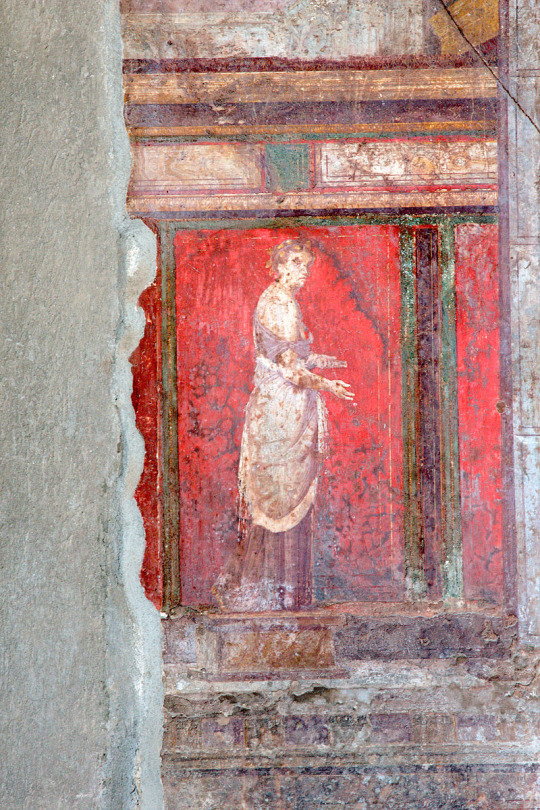
As time passed, the need for larger and finer quantities of vermilion increased, and alternative methods of creating the red pigment arose. It is unknown who discovered how to make mercury from cinnabar via removing the sulfur and vice versa to create vermilion, although it was likely done by an alchemist trying to produce gold (which ancient alchemists believed to be red-based and thus linked to this pigment). The Greek alchemist Zosimus of Panopolis in Southern Egypt insinuated that he had a secret recipe for artificial vermilion sometime around 300 CE, but the first description was found in Compositiones ad Tigenda (Recipes for Coloring), a Latin manuscript from the 8th century. Some of the manuscript is in Greek, so it is possible that the scribe copied it from a Hellenistic dictation, therefore indicating that the manufacture of vermilion had been known beforehand. By the 12th century, there was a clear recipe and process outlined by the Benedictine monk Theophilus, who wrote down what would become known as dry method vermilion.
To create the pigment, one needed to combine mercury and sulfur, then heat the two together. When simply mixed, the two elements create a black mercury sulfide known as aethiops mineralis. However, upon heating at the proper temperature, the mixture vaporizes and re-condenses in the top of the flask in which it was combined. Upon breaking the jar, the black mixture could be collected and then ground down. The powder then turns red as the color develops, becoming brighter and brighter as it is pulverized. This process was a source of great interest to medieval alchemists, as a transformation and combination of mercury and sulfur, and a possible gateway to gold. Mercury’s appearance and chemical behavior were the basis of a large section of alchemical theory and practice, and it and sulfur were seen as the parents of all metals. To combine the two into a likeness of cinnabar was greatly respected and devoutly practiced. However, this method could be incredibly dangerous if not done carefully, as the mercury fumes from improperly sealed vessels was extremely poisonous. In an effort to prevent harm, the Venice government banned this practice in 1294.
Undeterred by the danger, medieval artists greatly favored this pigment and used it excessively. Vermilion was used alongside gold leaf and ultramarine for manuscript capitals and on tempera panels. The pigment would be mixed with egg yolk to product a brilliant red paint that ranged from an orange toned scarlet or a violet hue with high intensity and pigment quality. In the 14th and 15th centuries, vermilion that had been tempered and become dingy would sometimes be mixed with saffron or walnut bark to produce a warmer tone. The paint was normally paired with vivid blues, greens, and yellows, as medieval artists believed it should be used alongside other beautiful and precious colors. Vermilion’s importance in art history cannot be understated: without it, it is likely that the middle ages would not have developed the high standards of coloring upheld in their works, and would have had less use for other bold colors invented after the 12th century.
However, this pigment had one fatal flaw: it inexplicably and unpredictably turned black. This process did not occur due to chemical changes or by direct sunlight, but rather a rearrangement in the structure of the mercury sulfide. The causes for this change are still not fully understood, but it seems to be less likely to occur in tempera or oil paintings under reasonable conditions, but seemed to affect lime paintings enough that it was not recommended for wall painting. Small amounts of blackening have been observed in some medieval manuscripts, but it is unknown if that was due to the vermilion or because of what it was mixed with, like white or orange lead. Luckily, most medieval paintings have survived and still shine a bright red today.

^ You can see the darkening of the horse's bridle in The Battle of San Romano (1435) by Paolo Uccello.
This pigment became less common after oil paint became the art medium of choice in the 15th century onwards, as the pigment presented as quite transparent in an oil base and other vibrant red pigments became available. It still had its uses, however: it was used as a glazing layer for oils and continued to be widely utilized in tempera and lacquer work. Da Vinci used vermilion in another application: as a grounding layer for his paintings.
Despite its translucence in oil, vermilion was still the most vibrant red and retained its popularity enough that alchemists still experimented with other methods of synthesis. A new technique for the manufacture of vermilion was discovered in 1687 by German chemist Gottfried Schulz, who created the Dutch method or wet method. In this process, mercury and melted sulfur were mashed together to create black mercury sulfide, then heated in a distiller to produce vapors that condensed into bright red crystals. The sulfur was then removed by treated the crystals with a strong alkali, then washed and ground under water to yield pigment powder. This process is still used today.
Cost and toxicity notwithstanding, vermilion still held the position of the primary red pigment used by European painters from the Renaissance through the 20th century, when it was almost entirely replaced by cadmium red. Today, genuine vermilion pigment is mainly manufactured in China, where it is still widely used in lacquerware and other art.

^ a lacquerware dish from the Ming Dynasty, 15th-16th cen CE
Thanks for reading this far! Images are from wikipedia. DM me if you'd like my sources :)
5 notes
·
View notes
